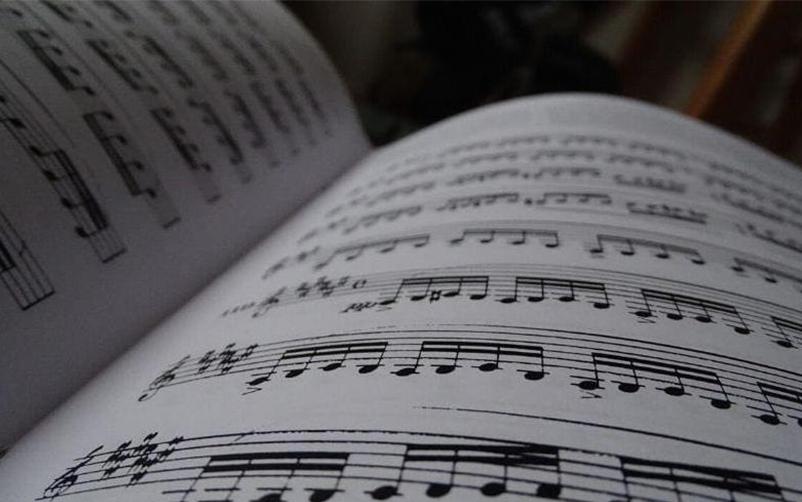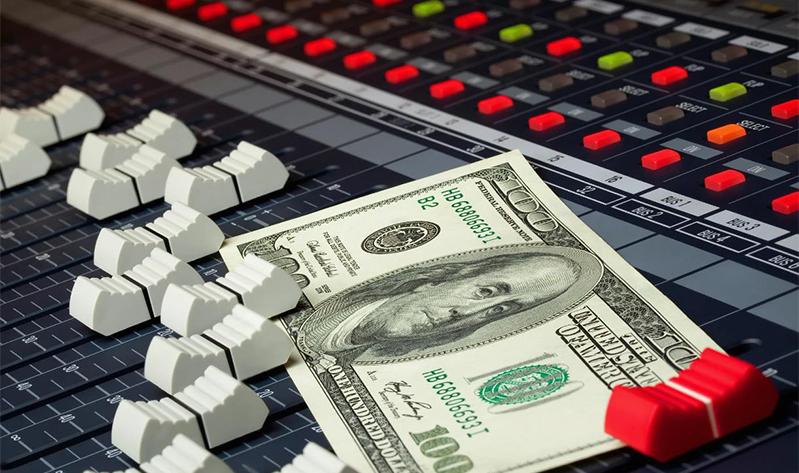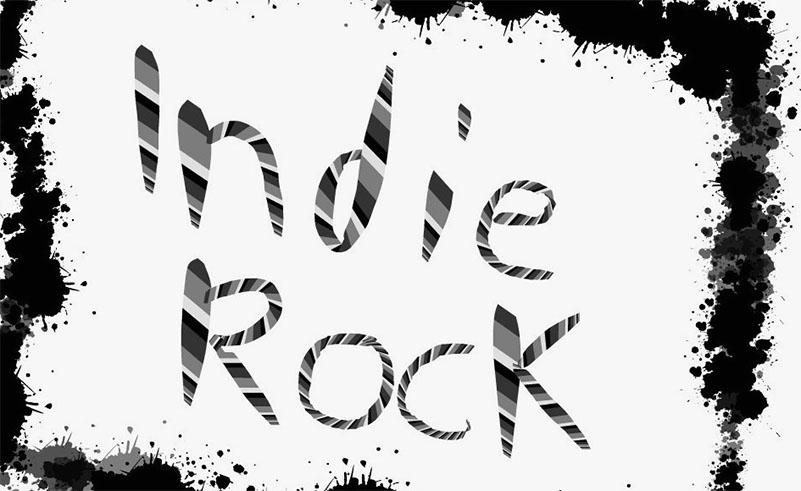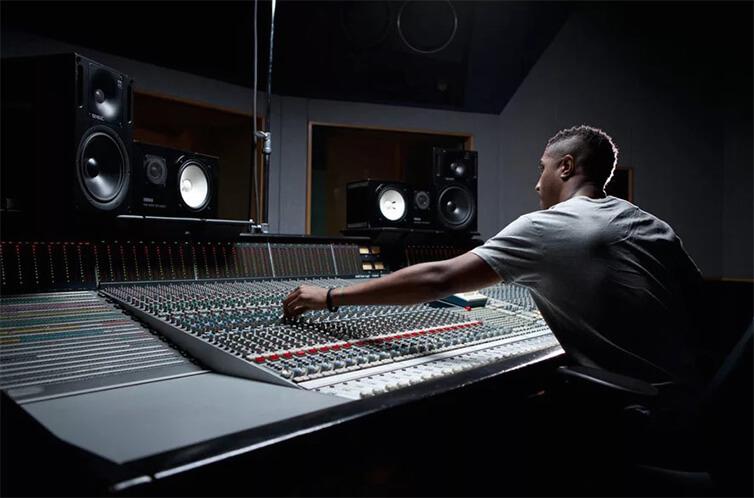Best synthesizers
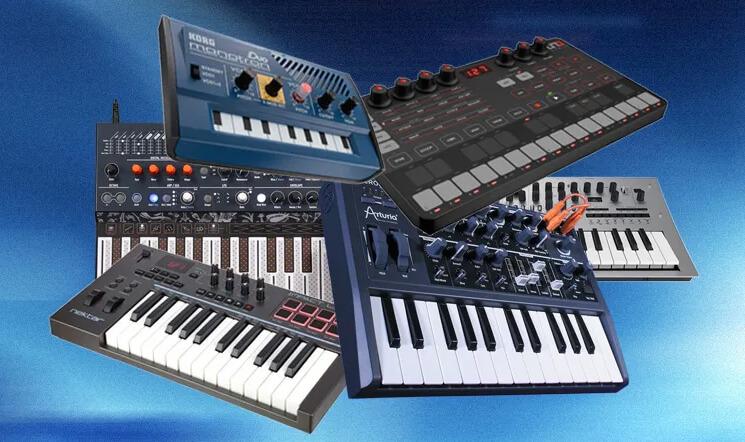
Music technology companies have been working hard to make hardware synthesizers more affordable, with Yamaha releasing the Reface DX for just $300. This is a great option for those who want to have a more hands-on experience with their music-making, as opposed to using software synths which can be powerful, but sometimes less creative. The Reface DX is a modern revival of the original Yamaha DX7, which was released in 1983 for $1,995 (over $5,000 when adjusted for inflation). So if you’re looking for an affordable hardware synth that won’t break the bank, the Reface DX is a great option.
Synths are a mainstay of electronic music production, and there are a multitude of them on the market, at all sorts of different price points. If you’re just starting out, or you’re on a tight budget, it can be tough to decide which synth is right for you. Not to worry – we’re here to help.
We’ve put together a list of our favourite hardware synths that come in at under $600. So, whether you’re looking for an affordable all-rounder, or a specific sound, there’s something here for you.
Korg is a renowned affordable synth specialist. Its products are popular with both beginner and experienced producers alike.
Behringer is another company that’s well-known for its affordable synths. It often produces clones of iconic, expensive machines, making them more accessible to a wider range of producers.
Roland is another giant in the synth world, and it too has a number of affordable offerings in its catalogue. Its Boutique series are particularly popular, as they offer modern versions of Roland’s classic analogue synths.
So, there you have it – our pick of the best hardware synths under $600. With so many great options to choose from, you’re sure to find the perfect one for your needs.
The best synthesizers: quick review
Arturia MicroFreak Hybrid Synthesizer
The Arturia MicroFreak Hybrid Synthesizer is a great choice for anyone looking for a low-latency synth that is easy to use. It has both monophonic and paraphonic modes with up to 4 voices, and it also features 25 touch-sensitive keys with aftertouch. Its variable analog filter and 64-step sequencer make it a great choice for any musician.
Korg Volca FM
This is a great synth for those on a budget. It has a large variety of presets, 3-voice polyphony, and a multi-touch keyboard. This synth can create a wide range of sounds, making it a great option for any musician.
Moog Grandmother Synthesizer
It’s a great tool for adding depth and ambiance to your tracks. It has a solid build quality, and its 32-note Fatar keyboard provides velocity sensitivity for a richer sound.
Korg Minilogue XD
The Korg Minilogue XD is a great choice for many musicians because of its intuitive sequencer. It has 4-voice polyphony and 37 slim keys that are velocity sensitive, making it an excellent instrument for sound customization.
Dave Smith Instruments OB-6 Analog Synthesizer
The Dave Smith Instruments OB-6 Analog Synthesizer is a high-end analog model that will take your music creativity to the higher level. This synthesizer has 6-voice polyphony, a four-octave semi-weighted keyboard, and true voltage-controlled oscillators. The 2-pole filter gives you the ability to create unique sounds that will stand out from the crowd. With all of these features, the Dave Smith Instruments OB-6 Analog Synthesizer is a must-have for any serious musician.
Yamaha Reface DX
It has a great keyboard for seamless app integration and a good key feel. It has 8-voice polyphony and 37 mini keys. Plus, its 4-operator FM sound engine creates amazing sounds.
Behringer Neutron
It’s an excellent modular synthesizer that provides a perfect combination of multi-wave LFO and a variable filter. It also has independent analog oscillators, which makes it great for creating a wide range of tones.
Behringer DeepMind 12
It’s an excellent choice for those in need of more voices. It has 12-voice polyphony and a 32-step sequencer, making it perfect for creating complex compositions. Additionally, its 49 full-sized, velocity-sensitive keys with aftertouch provide a great feel and playability. Finally, the 8-channel modulation matrix gives you a lot of control over the sound of your patches.
IK Multimedia UNO
This model is a great synth for beginners because its controls are easy to learn and use. It also has a 16-step sequencer and rec function, which are great for creating and recording music. UNO is lightweight and portable, so you can take it with you wherever you go.
Roland SYSTEM-8
The Roland SYSTEM-8 synthesizer is a versatile tool that can be used for a variety of purposes. It has 8-voice polyphony and 49 keys with velocity, which makes it an ideal choice for musicians of all skill levels. In addition, the SYSTEM-8 offers exceptional customization options, allowing you to create sounds that are perfect for your specific needs. Whether you’re a beginner or a seasoned pro, the Roland SYSTEM-8 is a great choice for anyone looking for a powerful and versatile synthesizer.
Elektron Digitone 8-voice Digital Synth
This digital synth is a portable powerhouse that you can take anywhere. It features 8-voices of polyphony, 16 pads for playing and sequencing, 2 FM controls and a filter. Whether you’re new to synthesis or a seasoned pro, the Digitone has something to offer everyone.
Novation Circuit Mono Station
This model is an excellent choice for creating impressive drum patterns. It has a slim design, and its monophonic or paraphonic capabilities let you create complex rhythms with ease. The 32 RGB backlit velocity-sensitive buttons allow for precise control, while the independent filter, decay, distortion, and pitch controls provide plenty of sound shaping options.
1. IK Multimedia UNO Synth
Synth engine: Analogue
Polyphony: Monophonic
Keyboard: Touch keyboard
Sequencer: Yes
Effects: Minijack In/Out
Connectivity: 3.5mm stereo output (mono summed), 3.5mm stereo input (mono summed), Micro USB
Power: Four AA batteries
Uno synth may be divisive in terms of its appearance, but it is an excellent-sounding, versatile analogue monosynth. It has a retro charm, with its slanted profile and push button control panel, but its design brings to mind the early days of home computers more than any vintage analogue synth. The lower part of the push button interface is taken up by a 27-note ‘keyboard’ for live playing, or to input notes for the onboard sequencer or arpeggiator. Despite all of this, Uno synth provides great value for money.
The presets of the Uno offer a vast array of sounds that can be used for classic basses and leads. The arp and sequencer are great tools for coming up with new ideas, and the software editor makes it even easier to use the synth to its fullest potential. However, there are a few compromises that need to be made when using this synth, but overall it is a great source of classic, punchy analogue sounds at an affordable price.
2. Korg Volca FM
Synth engine: Digital FM
Polyphony: 3 voices
Keyboard: Multitouch
Sequencer: Yes
Effects: ChorusMIDI I/O: In
Connectivity: Headphones, Sync In, Sync Out
Power: Battery or optional AC adapter
The Volca FM is a compact, battery-powered instrument that captures the sonic essence of the Yamaha DX7 while adding powerful new features. It’s equipped with a ribbon-style keyboard-come-sequencer, built-in speaker, MIDI input and 3.5mm sync in/out. This makes it the best Volca instrument so far.
The Yamaha Reface DX is a great little synth. It’s not without its limitations – the lack of polyphony leaves it lagging behind the original DX7, Yamaha’s Reface DX, and the various FM plugins out there – but the sound of those dark, percussive basses, icy mallets and ’80s-style horns is bang on.
If you start to push the capabilities of this tweakable, hands-on little synth, you’ll find it’s capable of some truly unique tricks. It’s a great choice for anyone looking for an affordable, easy-to-use FM synth.
3. Arturia MicroFreak
Synth engine: Digital
Polyphony: 4 voice paraphonic
Keyboard: 25-key capacitive keyboard
Sequencer: Yes
Effects: NoneMIDI I/O: In/Out
Connectivity: Mono 1/4-inch output for audio, headphone output; 3.5mm CV/Gate/Pressure outputs, and 3.5mm MIDI I/O
Power: USB-powered, AC adapter
The MiniBrute is a powerful hardware synth that is perfect for creating a wide range of sounds. With its multiple oscillator modes, versatile filter, and modulation Matrix, the MiniBrute can create everything from smooth pads to edgy leads. Additionally, the performance and sequencing tools make it easy to create and perform complex musical parts. The only downside is that the MiniBrute doesn’t come with a built-in sequencer, but other than that, it’s an amazing synth that any musician would be lucky to have in their arsenal.
The MicroFreak is a unique and innovative synthesizer that blends the best of both analog and digital worlds. Its hybrid architecture combines a classic analog filter with a powerful digital engine, giving you limitless possibilities for sound design. Although it may not look like much, the real magic of the MicroFreak lies in its combination of all these different elements. If you’re looking for a new synth to try out, the MicroFreak should definitely be at the top of your list.
4. Behringer Neutron
Polyphony: Paraphonic
Synth engine: all-analogue; 2 VCO, 1 VCF (12db LPF/HPF), VCA, 2 ENV (ADSR), LFO, BBD delay, overdrive
Control: External MIDI/CV control only
Patch points: 56
Other I/O: MIDI In/Thru, USB (MIDI in), master out, audio in, headphone out
Since its release, the Behringer Neutron has been a popular choice for those looking for an affordable analogue semi-modular synth. It offers a lot of flexibility, with a range of different oscillators, filters and modulation options that make it perfect for both beginners and experienced synth players alike.
Whether you’re looking to create huge bass lines or soaring lead melodies, the Neutron is capable of producing a wide range of sounds. And with its affordable price tag, it’s definitely worth considering if you’re in the market for a new synth.
Its versatility is one of its strongest points; whether you want to create a realistic soundscape or go all out with something completely crazy, the Neutron can handle it. So if you’re looking for an affordable synth with plenty of options, the Neutron should definitely be at the top of your list.
5. IK Multimedia Uno Synth Pro
Synth engine: Analogue
Polyphony: Paraphonic
Keyboard: Full 37-note keyboard (or touch on the desktop)
SequencerSequencer: 64-step sequencer
Effects: 12 effects in three slots
MIDI I/O: Minijack In/Out
Connectivity: 2 x 1/4” outs, 3.5mm headphone out and input, 2 x CV in and out, USBPower: PSU (desktop via USB)
The UNO Synth Pro is a powerful analogue synth that is available as either a full-size keyboard version or a desktop unit. The keyboard version is larger and features a metal enclosure as well as pitch and mod wheels. Aside from those differences, the two versions are identical. The synth is capable of generating a wide range of sounds, making it perfect for both studio and live use.
UNO Synth Pro is a great sounding analogue synth with three oscillators and a white noise generator. Each of the oscillators has a variety of wave shapes to choose from, including saw and pulse width modulation. There are also two analogue state variable filters, each with cutoff and resonance controls. This synth is perfect for creating fat, warm sounds.
The UNO Synth is a great synth for the money, with a really simple workflow. It has a fantastic modulation matrix, which is a doddle to use; fast and powerful, belying its appearance. With a great sequencer and some fantastic effects – although not many of them – this synth is a great instrument overall and one that definitely punches over its weight class, in terms of sound and functionality. All in all, it is a great buy for anyone looking for a great sounding and easy to use synth.
6. Arturia MiniBrute 2
Synth engine: Analogue
Polyphony: Paraphonic
Keyboard: 32 RGB-backlit velocity-sensitive button grid
Sequencer: Yes
Effects: Distortion (three types)
MIDI I/O: In/Out/Thru
Connectivity: Headphones. line out, audio input, analogue clock in and out, CV, gate and aux CV outputs, USB (MIDI only)
Power: Power adapter
The MiniBrute 2 is a semi-modular synthesizer that boasts a beefed- up synth engine and a comprehensive mini-jack patchbay. As before, the primary oscillator can generate saw, triangle and square waves simultaneously, the outputs of which are blended via the oscillator mixer, where they’re joined by a white noise source and external audio input. However, the MiniBrute 2 also features a number of other improvements that make it an even more powerful and versatile synth than its predecessor. These include an additional VCO, a sub-oscillator, a ring modulator, and multiple modulation sources. With these new features, the MiniBrute 2 is capable of generating a wider range of sounds than ever before, making it a must-have for any serious synth enthusiast.
The MiniBrute 2 is a great synth. It has the Steiner-Parker-style filter of its predecessor, which offers -12dB low- and high-pass modes, plus -6dB band-pass and notch filtering. It also has some really cool features, like the analogue grit, interesting oscillator shaping and Brute factor control, which overdrives the signal chain using a controlled feedback loop. The MiniBrute 2S is also a great synth – it has a pad-based step sequencer instead of keys. Both are serious competitors in the synth market.
7. Korg Minilogue XD
Synth engine: Hybrid
Polyphony: 4 voices
Keyboard: 37 slim keys, velocity-sensitive
Sequencer: Yes
Effects: Delay, Reverb, Chorus, Flanger, Ensemble, PhaserMIDI I/O: In/Out
Connectivity: Headphones, stereo output, audio in, sync in, sync out, USB, 2x CV in
Power: AC adapter
The Korg Minilogue XD is a great synthesizer that falls in the middle of the Minilogue and Prologue lines. It has a powerful sequencer, extended general versatility, user-customisable Multi-Engine/effects, and a joystick for real-time control. It also has user scales/tunings and inspiring stereo effects/output. If we had to choose between this and the original Minilogue, we’d go with the XD due to its superior features.
The Korg Minilogue XD is a great synthesizer that falls in the middle of the Minilogue and Prologue lines. It has a powerful sequencer, extended general versatility, user-customisable Multi-Engine/effects, and a joystick for real-time control. It also has user scales/tunings and inspiring stereo effects/output. If we had to choose between this and the original Minilogue, we’d go with the XD due to its superior features.
8. Korg Wavestate
Synth engine: Digital
Polyphony: 64 voices
Keyboard: 37 full-size, velocity sensitive
Sequencer: Yes
Effects: 14MIDI I/O: In, Out, USBConnectivity: USB
Power: 12V DC
Korg’s Wavestate is a synthesizer that makes use of wavetable synthesis to create unique sounds. Wavetable synthesis is an intuitive method that allows for a wide variety of sounds to be accessed from within a single patch. This makes it an ideal choice for sound designers and experimental producers who are looking to create new and innovative sounds.
The Wavestate is a powerful synthesizer that offers 64 stereo voice polyphony and a wealth of sequencing potential. It can create some of the most diverse sounding modern synths on the market, but in order to take full advantage of its features, some effort is required. With its many capabilities, the Wavestate is capable of doing almost anything you can imagine.
9. Modal Electronics Cobalt8
Synth engine: Virtual Analog
Polyphony: 8 voices
Keyboard: 37 Fatar full-size keys
Effects: Yes
MIDI I/O: In, Out, USB
Connectivity: USB
Power: 9V DC
The Modal Electronics Cobalt8 is a great synth option for those who don’t have a lot of money to spend. It has full 8-voice polyphony, along with a variety of effects and a 512-note sequencer. This makes it a great tool for creating music.
The Cobalt8 is a great option for those coming from a background of only using VSTs and soft-synths. It has MPE support, which is great for Ableton Live 11 users, and it’s overall very versatile. Despite any preconceptions you may have about analog synths, the Cobalt8 is a lot of fun to play.
10. Elektron Digitone
Synth engine: FM digital
Polyphony: 8 voices
Keyboard: None
Sequencer: Four synth tracks and four MIDI tracks
Effects: Chorus, delay, reverb, overdrive
MIDI I/O: In/Out/Thru
Connectivity: Two 1/4-inch balanced audio outs, two 1/4-inch audio ins, headphones, USB
Power: Power adapter
FM synthesis is a type of sound synthesis that uses frequency modulation to create sound. This type of synthesis is often used in digital synthesizers, and can create a wide range of sounds. The Digitone is an example of a synthesizer that uses FM synthesis, and it has some very impressive features.
The Digitone’s FM sound engine is eight-note polyphonic, which means it can play multiple notes at the same time. It also has four dedicated tracks (accessed directly via the T1-T4 buttons), as well as four MIDI tracks for controlling/sequencing external MIDI gear. This makes the Digitone very versatile and powerful.
Once you start using the Digitone’s FM sound engine, you’ll quickly see why it’s such a popular choice for digital synthesis. The sounds you can create are very diverse and interesting, and the overall design of the synthesizer is excellent. If you’re looking for a great way to get into FM synthesis, the Digitone is definitely worth checking out.
The Digitone is capable of much more than simple old-skool FM impersonations. With the sequencer, modulators and filters, you can create truly amazing sounds that show off the synth’s true colours. The effects overlayed or ‘P-locked’ only enhance the sound quality even further.
11. Behringer DeepMind 12
Synth engine: Analogue
Polyphony: 12 voices
Keyboard: 49 keys, velocity-sensitive and aftertouch
Sequencer: 32-step control sequencer
Effects: More than 30 algorithms including reverb, chorus, flanger, phaser, delay and multiband distortion
MIDI I/O: In/Out/Thru
Connectivity: Stereo outputs, Headphones, CV/pedal input, USB
Power: Stereo outputs, Headphones, CV/pedal input, USB
Behringer’s first analogue synth is polyphonic to the tune of 12 simultaneous voices, and with a metal case and wooden side panels, it looks like the real deal. While DeepMind is certainly interactive and powerful, it lacks the immediacy of some of the simpler classics, such as Roland’s Juno-106 or Jupiter-8. That said, this is an impressive first entry into the synth arena for Behringer.
Unlike some of its previous products, this is not a cut-price clone, and delivers its own take on what a $900 analogue polyphonic synth should be. Throw in the free cross-platform editing software, 1,024 onboard presets and a three-year warranty, and you have an alluring package.
12. Studiologic Sledge
Synth engine: Virtual analogue
Polyphony: 24 voices
Keyboard: 61 keys with aftertouch
Sequencer: No
Effects: Chorus, phaser, flanger, delay, reverb
MIDI I/O: In/Out
Connectivity: Left and right audio outs, two headphones outs, USB (to host and MIDI), hold and expression pedal inputs
Power: AC adapter
The original Waldorf-powered Sledge launched in 2012 and, despite being pretty reasonably priced and offering a very solid synth engine, largely fell under the radar. However, v2.0 is a significant upgrade. There’s no doubt that the Sledge’s front panel has been largely influenced by the Minimoog with its classic three-oscillator plus filter plus dual envelope layout. It’s a great choice of design as it’s very familiar to most people and flows very nicely.
Throw in wavetable and sample import options, plus FM, 24-note polyphony, split/layering facilities and aftertouch support, and Sledge starts to look like a great buy. A black version with several new features is now available, too.
13. Moog Grandmother
Polyphony: Mono
Synth engine: 2 VCO, 2 VCF (24db LPF & 6db HPF), VCA, 1 ENV (ADSR), 1 LFO, spring reverb
Control: 32-note keyboard, sequencer/arp
Patch points: 41
Other I/O: Chorus, phaser, flanger, delay, reverb
MIDI I/O: MIDI in, out & thru, audio in, master out, headphone out, arp/seq CV control
Moog’s latest semi-modular comes equipped with a 32-note Fatar keyboard, sequencer and arp, making it more performance-focussed than its siblings in the Mother line. It has a chic multi-coloured retro design that suits its authentic vintage sound. The old-school approach is rounded off nicely with the inclusion of a spring reverb module – a rare inclusion in modern synths.
Grandmother is a versatile performer, capable of a vast range of sounds even before patching a cable. Is it worth the asking price? Absolutely, if for no other reason than providing users with a taste of those old Moog modular circuits without having to take out a second mortgage.
14. ASM Hydrasynth
Synth engine: Digital Wave Morphing
Polyphony: 8-voice
Keyboard: Full, 49-note with polyphonic aftertouch
Sequencer: No (includes a deep arpeggiator)
Effects: Nine pre effects, delay, reverb, nine post effects
MIDI I/O: MIDI In/Out/Thru
Connectivity: 2 x 1/4″ outs, 2 x headphone out, sustain and expression in, 2 x C V in, 5 x CV out, USB
Power: External (wall-wart) PSU
Hydrasynth is an unconventional digital synth that uses ‘wave morphing’ at its core. You have eight voices of polyphony utilising three oscillators per voice which include standard waves, plus wave-scanning, an intuitive type of wavetable synthesis where you can assign eight waves and then scan through them using a dial/mod route. Add in five (looping) envelopes per-voice, an amp module, two filter modules, five LFOs, reverb and delay modules, plus pre and post effects, and you have everything you need in terms of sound design, and all directly accessible and mostly modulatable!
The general sound quality is truly excellent. It can be precise and crisp, warm and textured, with everything from high-quality ‘bread and butter’ sounds, to something truly unique and never heard before. Once you factor in the ribbon controller, arpeggiator, macros, mod routes – and poly aftertouch – and all the very musical sounding effects/drive, you’ll be discovering new sounds in super quick time.
There is something of a learning curve but remember we are dealing with a lot of complexity – Hydrasynth is a deep synth and hugely impressive. In terms of build quality, looks, features, sound – not to mention affordability – Hydrasynth has it all.
Advices how to buy synthesizer
When shopping for a synthesizer, there are a few key factors you need to consider. Obviously, your budget will be a big factor, but even affordable synthesizers can provide hours of enjoyment. Another thing to think about is the type of synth you want. Hardware synths are becoming more and more popular, and they offer a level of functionality that you just can’t get with software synths.
There are amazing hardware synthesizers available at every price point, so no matter what your budget is, you’re sure to find something that fits your needs. And as hardware synths have become more popular, manufacturers have been finding new and innovative ways to pack in extra features. So whether you’re a beginner or a seasoned pro, there’s a hardware synth out there that’s perfect for you.
Hardware synths are a great way to add some flexibility and power to your music-making. They come in all shapes and sizes, with different features and capabilities. At the top end, you’ll find synths that pack in more voices or effects, or with sequencing skills that can take your compositions in all sorts of new directions.
That’s part of what makes a hardware synth so much fun. You don’t always have to be ‘writing’ music, in the true sense of the word. Sometimes you can simply change a few parameters and see what happens. For creative, curious people, there are few things that come close to the experience of playing a hardware synth.
There are always evolving trends in music and music technology. FM synthesis, for example, seems to be experiencing a resurgence, while digital synths with wavetable functionality provide greater tonal possibilities. Don’t rule out digital or hybrid models, as they offer the best of both worlds.
Hardware synthesizers can be a great way to add new sounds to your music. Ultimately, you’ll know the sound you’re looking for, but don’t rule out the possibility that a good hardware synth might just spark something and take your creativity off in a different direction completely.
What to consider when choosing a synthesizer?
When shopping for a synth, it’s important to know which features are most important to you. This way, you can avoid buying a product that’s not exactly what you wanted. Some features to consider include the type of synth, the number of voices, and the type of sounds it can create. Keep in mind your budget when making your decision. With all of this in mind, you’re sure to find the perfect synth for your needs.
Before buy synthesizer pay attention to the following nuances:
- digital or analog sound;
- how many steps has sequencer;
- do you want a keyboard to play your sounds.
Signal type
Synth experts and novices prefer to use analog synthesizers because they are easier and have more functionality. Analog synthesizers produce warmer music and their price isn’t usually high compared to the digital model. Digital synthesizers, such as the Yamaha REFACE DX, are still excellent to use and are cheaper than analog models. The main difference between analog and digital synthesizers is the waveform and circuitry. However, many audiophiles will prefer analog because of the warmer sound it produces.
Polyphony
Polyphony is the term for playing multiple notes at the same time, as opposed to monophony which is playing one note at a time. Some people prefer polyphony because of the richer sounds that can be produced, while others find it more versatile and interesting to switch between monophony and polyphony. Ultimately, this comes down to personal preference.
A great example of a polyphony synth is the Elektron Digitone, which has 8 voices available. Another option is the Arturia MicroFreak, which is versatile and can switch between the two. Ultimately, it comes down to what you prefer in terms of sound and style. There are many great options out there, so experiment and find what works best for you!
Keys
The keyboard is a very important feature of the synth, as it can determine the genre or type of music that is being made. It can also help you know how many notes you are required to play at the same time. Some people may prefer touchpads instead of a keyboard, as they don’t need the extra keys. However, if you do have keys, their feel is also very important. Weighted keys resemble the feel of an acoustic instrument, adding dynamics and making notes more comfortable to press. This will also give you the same vibes as from an acoustic piano. Therefore, the keyboard is a key factor (pun intended) in choosing the right synth for your needs.
Interface
Synths can come in all shapes and sizes, with a variety of different interfaces. Keys, knobs, and sliders are common on many models, but their number and position can vary. If you’re familiar with a synth’s interface, you may want to find another one that has a similar layout. Otherwise, it’s simply a matter of finding the model that best suits your needs.
A digital display can be a valuable asset when working with synthesizers. By studying the interface before you buy, you can check that you’ll be comfortable with it. This will allow you to work more seamlessly. The Behringer DeepMind 12 is one example of a digital display that provides valuable information.
Oscillators
An oscillator is an electronic circuit that generates a periodic signal, often with a very pure tone. Oscillators are used in many electronic devices, including radios, televisions, and synthesizers. Without oscillators, the quality of the music produced by synthesizers would be much poorer. Oscillators can detect and use any audible notes to allow the music to have a richer flavor. This makes the synthesizer’s tone more full and realistic.
The Behringer Neutron has two oscillators with waveform control, which gives you excellent control over your music and makes rich sounds.
Filters
A good synth should also have a lot of customizability when it comes to creating music. Filters are a vital part of that, as they can remove two different audio frequencies. There are two different types of filters – low and high pass filters.
Low pass and high pass filters are important tools in synthesizers. Low pass filters can allow a different audio frequency to pass below the cutoff point, while high pass filters do the opposite, blocking audio frequencies above the cutoff point. A synth can also have a band-pass filter, which only permits a mid-range sound.
Envelope generator
The ADSR – attack, decay, sustain and release – is a set of four control parameters that can be used to adjust the sound of an acoustic piano. For example, the ADSR can be used to adjust the amplitude of the music, its filters or its pitch.
When you press the keys of a regular acoustic piano, it creates an initial sound that then decreases in volume to zero. However, envelope generators can be used to change this behaviour, allowing for a wider range of sound possibilities.
The four stages of ADSR are attack, decay, sustain, and release. The attack is the time for the initial run-up, while the decay is doing the opposite. Next, sustain is where the sound is being sustained until the key is released. The release is where the level of decay up to the level of sustain is kept to zero until the key is released.
Sequencer
Sequencers are an important part of synthesizers, as they allow you to create sequences of notes. This can give your music a lot of dynamism and variation. Some synths include a sequencer, while others allow you to connect to one externally. Which one you use is up to you. Ultimately, sequencers are a great way to add variety and interest to your music.
Effects
Effects processors play an important role in shaping the sound of musical performances. Just as filters can modify and alter the sound frequency, effects can change the original notes, resulting in a more mind-blowing sound. All of the Behringer DeepMind 12’s effects have a ridiculous control because of the external control voltages. This allows MIDI to control the sound. Another great feature is adding pedals that can help modulate a single parameter. This gives the musician even more control over the final sound.
Connectivity
When connecting a synth, it’s important to know what you will be connecting it to. This can include a computer, an external sequencer, or another type of device. It’s a good idea to think about your set-up before you decide on which synth to purchase. Many synths have similar inputs and outputs, but they aren’t all the same. To avoid any disappointment, be sure to double-check this information before making your final decision.
Portability
When choosing a synth, portability is an important consideration. You’ll want to look for a model that is lightweight and easy to transport. Some key features to consider are size and weight. Choose a synth that is easy to carry so you can take it with you wherever you go.
When looking for a synth to take on the road, it’s important to consider its build quality. A synth that’s going to be subjected to bumps and drops needs to be able to withstand them, so make sure you get a model that’s built well. If the synth is just going to stay in a studio, this will be less of a concern.


